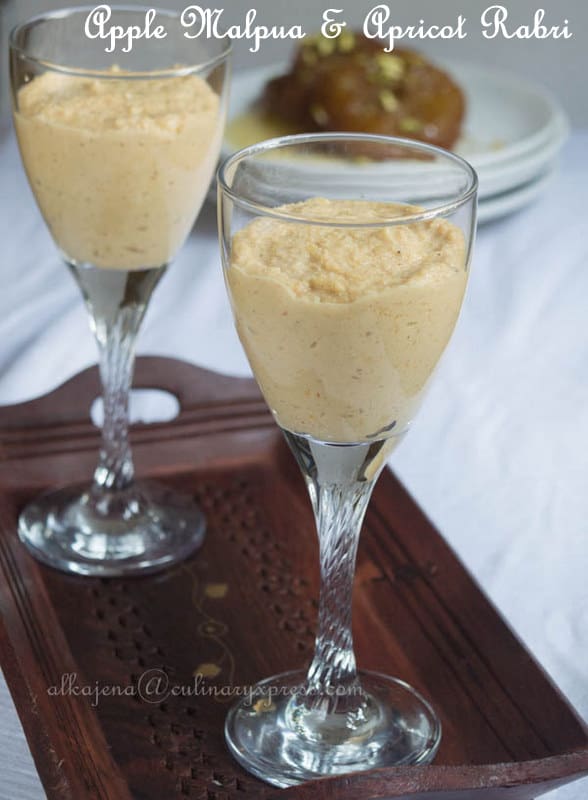
Navratri is celebrated to glorify the spirit in us. The spirit in us alone can destroy all negative qualities (inertia, pride, obsession, cravings, aversions, etc). By turning inward during Navratri, and getting in touch with the spirit within, we can overcome these negative tendencies and invoke the position qualities that are within us, thus feeling elevated and renewed.
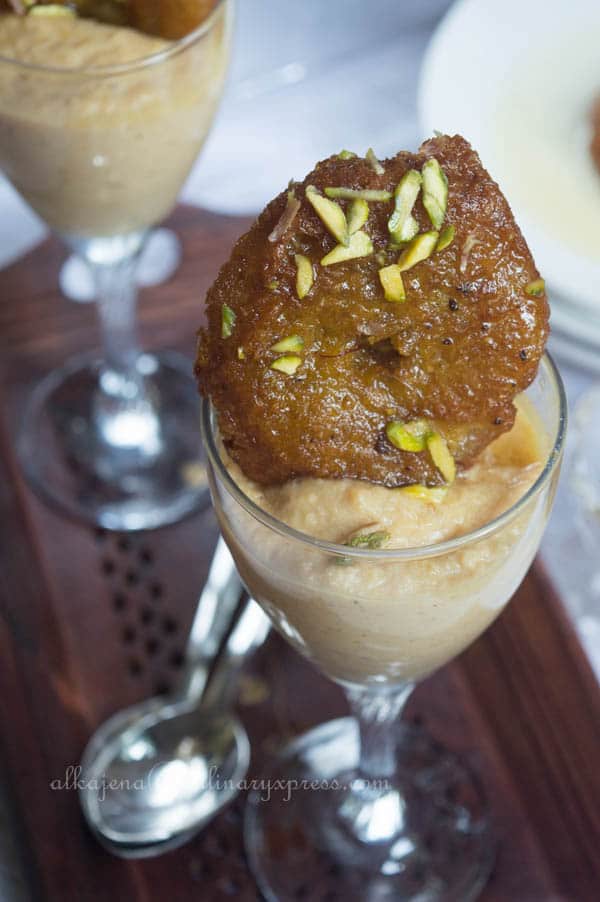
Navaratri is a festival dedicated to the worship of the Hindu deity Durga. The word Navaratri means ‘nine nights’. In Sanskrit, navameans nine and ratri means nights. The nine nights of Navratri celebrate and honor the nine different aspects of Mother Divine known as Nava Durga. During these nine nights and ten days, nine forms of Devi are worshiped. The tenth day is commonly referred to as Vijayadashami or “Dussehra” .Navaratri is celebrated four times a year. They are Vasanta Navaratri, Ashadha Navaratri, the Sharad Navaratri, the Paush/Magha Navaratri and the Magha Navaratri. Of these, the Sharad Navaratri of the month of Puratashi and the Vasanta Navaratri of the Vasanta kala are the most important. Navaratri represents a celebration of the Goddess Amba, (the Power). The Navaratri commences on the first day (pratipada) of the bright fortnight of the lunar month of Ashwin.

There are many incarnations of Durga: Kali, Bhagvati, Bhavani, Ambika, Lalita, Gauri, Kandalini, Java, Rajeswari, et al. Durga incarnated as the united power of all divine beings, who offered her the required physical attributes and weapons to kill the demon “Mahishasur”. Her nine appellations are Skandamata, Kusumanda, Shailaputri, Kaalratri, Brahmacharini, Maha Gauri, Katyayani, Chandraghanta and Siddhidatri.
During Navaratri, we invoke the energy aspect of God in the form of the universal mother, commonly referred to as Durga which literally means the remover of miseries of life. She is also referred to as “Devi” or “Shakti” .It is this energy, which helps God to proceed with the work of creation, preservation and destruction. In other words, you can say that God is motionless, absolutely changeless, and the Divine Mother Durga, does everything. Truly speaking, our worship of Shakti re-confirms the scientific theory that energy is imperishable. It cannot be created or destroyed. It is always there.
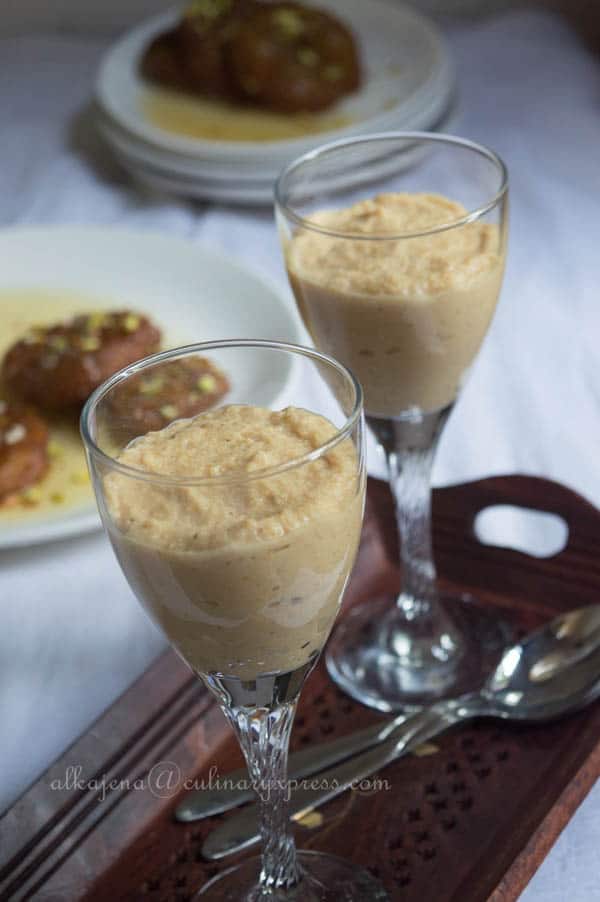
Navaratri is divided into sets of three days to adore different aspects of the supreme goddess. On the first three days, the Mother is invoked as powerful force called Durgain order to destroy all our impurities, vices and defects. The next three days, the Mother is adored as a giver of spiritual wealth,Lakshmi who is considered to have the power of bestowing on her devotees the inexhaustible wealth. The final set of three days is spent in worshipping the mother as the goddess of wisdom Saraswati. In order have all-round success in life, we need the blessings of all three aspects of the divine mother; hence, the worship for nine nights.
Day 1 is known asPratipada wherea ritual calledGhatasthapanais performed toinvoke the energy of the goddess. The first among the Navadurgas is Shailaputri. Shaila means stone, and putri means daughter. Praying to this aspect of Mother Divine brings strength (like a stone). It brings commitment. When the mind is wavering, chanting the name of this Devi Shailaputri helps the mind to be centered and committed. It gives us strength, courage, and composure.
Day 2 known as Dwitiya is when the goddess is worshiped as Brahmacharini, the unmarried form of Goddess Parvati. As she undertook great penance to get Lord Shiva to marry her, she’s associated with pious strictness. The color to be worn on this day is yellow. When we pray to this form of Mother Divine, we invoke the quality Brahmacharya. And our consciousness starts moving in the infinity, in our true nature. When we recognize our true nature, we become vast and powerful with a lot of vigor, valor and strength.
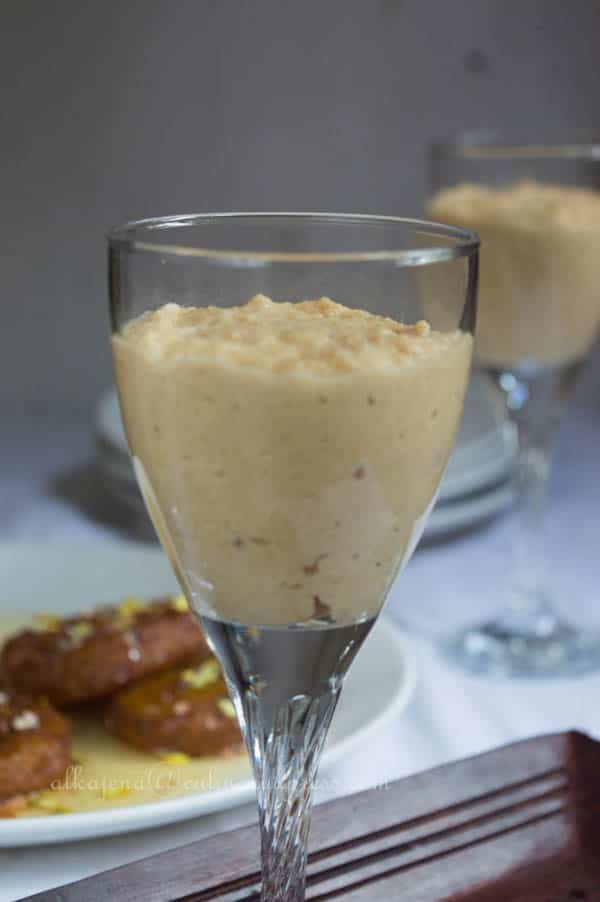
Day 3 known as Tritiyais when the goddess is worshiped as Chandraghanta, the married form the Goddess Parvati. Her name is derived from the half-moon on her forehead, which looks like a bell. She’s depicted riding on a tigress, and is associated with bravery and courage to fight evil. The color to be worn on this day is green.The moon is connected with the mind, and the Ghanta (or the bell) is an instrument connected with alertness. The ringing of the bell brings the mind to the present moment. Just as the moon waxes and wanes, the mind also wavers. Chanting the name of this Devi brings the mind in our control with increased alertness. Chandraghanta represents this aspect of beauty in the mind. A beautiful mind is an adornment.
Day 4 known as Chaturthi is when the goddess is worshiped as Kushmanda, who lived inside the sun and is believed to have created the universe, giving light and energy to it. She represents the form of Durga that is the source of all. The color to be worn on this day is gray. Kushmanda means pumpkin. A pumpkin has many seeds and each seed contains the potential for many more pumpkins. This is representative of the creative power and its eternal nature. The whole creation is like a pumpkin. As Kushmanda, the Devi contains the entire creation within her. She is the Devi who can give you the highest prana (creative energy).
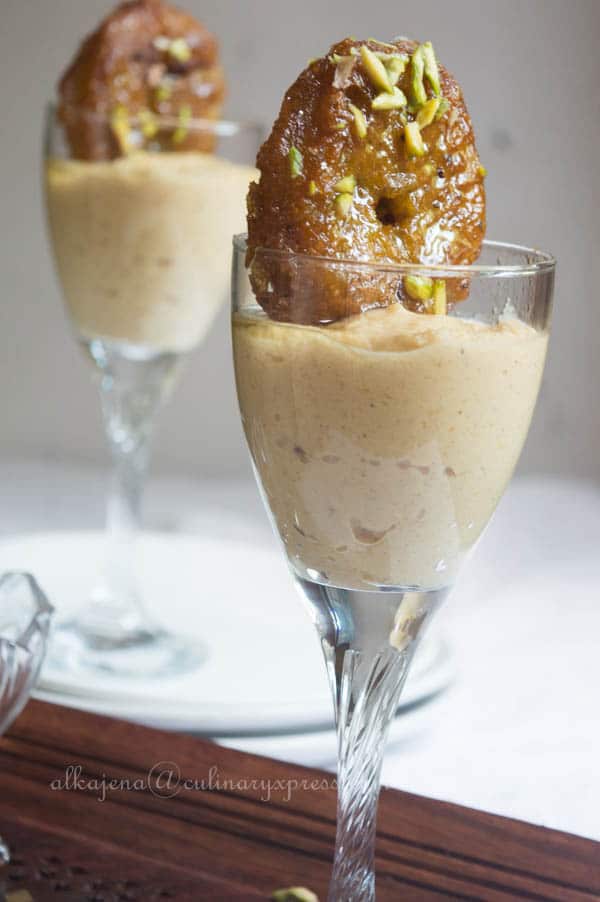
Day 5 known asPanchami is when the goddess is worshiped as Skandamata, the mother of Kartikeya (also known as Skanda), son of Lord Shiva and brother of Lord Ganesha. She is depicted as riding a lion with the baby Skanda on her lap. This signifies courage and compassion. The lion signifies courage, while Mother Divine is the embodiment of compassion.Skanda is the skillful one. Often when one is very skillful, they tend to be arrogant. Most of very talented people have arrogance. But here the skill is combined with a humility that nurtures innocence.When we pray to this form of Mother Divine, we are bestowed with the qualities of skill along with innocence, and courage along with compassion.The color to be worn on this day is white.The color to be worn on this day is orange.
Day 6 known as Shasthi is when the goddess is worshiped asKatyayani, who Goddess Parvarti morphed into in order to fight and destroy the buffalo demon Mahishasura. She represents a warrior form of the goddess. Kathyayini represents the nurturing aspect of the
Divine Mother. She embodies the values of sharing and caring. Young girls pray to Devi Kathyayini for a good husband. Marriage comes with a sense of security, commitment, togetherness, team spirit and belonging. She signifies the finer qualities of being in a relationship.The ultimate relationship is the union with oneself (soul).
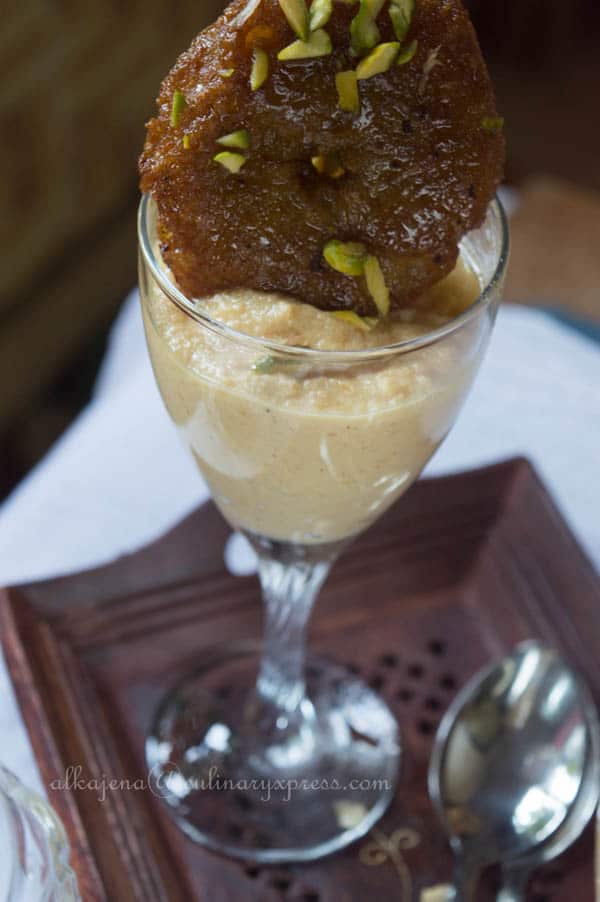
Day 7 known as Saptami is when the goddess is worshiped as Kalaratri, the dark night. She appeared to destroy some particularly evil demons in the battle against Mahishasura. She’s the goddess’s fiercest form and represents protection from all troubles. Kaala is time. Time consumes everything in creation, and time is a witness to everything as well. Ratri means deep rest, absolute rest at the level of the body, mind and soul. Kaalaratri represents the deepest rest so that you can attain dynamism.The color to be worn on this day is pink.
Day 8 known as Ashtami is when the goddess is worshiped as Mahagauri, the younger version of Shailputri who had a very fair and perfect complexion. She represents beauty and grace, and the cleansing of sins.Gaura varna means white color. White represents purity. Purity comes out of innocence. Maha Gauri is the combination of brilliance and innocence. Gaur also means knowledge. When we pray to Maha Gauri, she gives you the wisdom that is the elixir of life. The color to be worn on this day is sky blue.

Day 9 known as Navami is when the goddess is worshiped asSiddhidatri, who embodies all eightsiddhis(supernatural powers). She is believed to have granted them to Lord Shiva when he worshiped her, and she also bestows them upon her devotees. Siddhidhatri is the one who gives all the siddhis. Siddhi means perfection. When you want something, and if before the want arises it is available to you, that is called Siddhi (when you receive before you even feel the need, and when you receive more than what you need). A sadhak or seeker will get many siddhis on the path. However, if you misuse or run behind them, they will be lost.Only when you are centered, you receive the true knowledge; one who knows never loses equanimity. The tradition of the Master is very important here. The sadhak should follow the footsteps of the parampara and move on the prescribed path of knowledge. Siddhidhatri fulfills all desires and bestows powers naturally. Perfection and enlightenment are the gifts of Siddhidhatri which are attained in the presence of the Master.The color to be worn on this day is purple.
The food that we eat can easily be classified into three types – Sattvic, Rajasic and Tamasic.Intake of Sattvic food helps improve mental health and energy, thereby improving the state of your consciousness. It helps restore harmony and the balance of the body and mind. Having a Sattvic diet on a regular basis can help in the formation and rebuilding of high-quality body tissues.
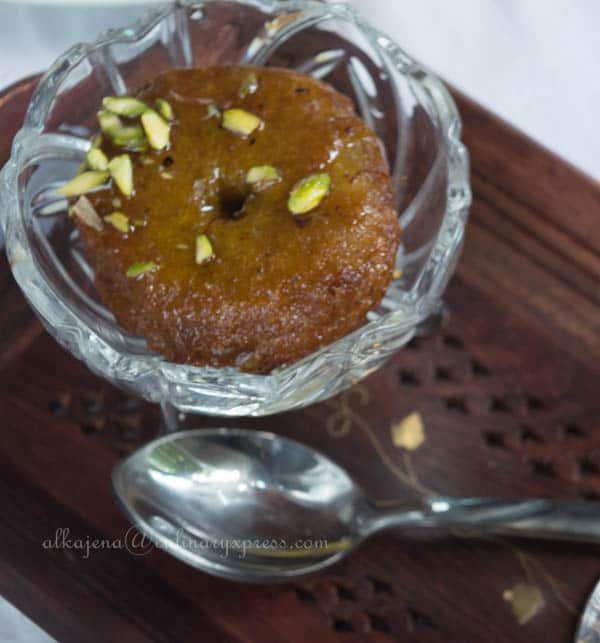
A Sattvic diet simply means light and healthy food. It does not go to any extremes of taste – neither too sweet, nor too salty or spicy – just moderate. Plainly put, Sattvic food is that which purifies the body and calms the mind. A Sattvic diet consists of pure food (not processed), light in potency, and rich in Prana (life force) – that which energizes the body and mind. Cooked food consumed within 3-4 hours of preparation can be considered Sattvic.
A traditional Navratri diet is one that pacifies our digestive fire. It can be any combination of the below ingredients:
- Buckwheat (Kuttu) Roti, Fasting Rice (Shamak Rice), Dosa from Fasting Rice, Dishes made from Sago (Sabudana), Water Chestnut (Singhara) Flour, Rajgira, Yam (Suran), Colocacia (Arbi), Boiled Sweet Potatoes (Shakarkand), etc.
Clarified Butter (Ghee), milk and buttermilk. All these have a cooling effect on our body.
- Yogurt combined with bottle gourd (lauki) and pumpkin (kaddu).
- Lots of fluid – tender coconut water, juices, vegetable soups, etc. Besides providing energy, they prevent dehydration and flush out the toxins released during fasting.
- Fruit salad made with papaya, pear and apple
When following a traditional Navratri diet, it is also recommended to Use rock salt instead of common salt for cooking, Use healthy cooking methods like roasting, boiling, steaming and grilling, Be strictly vegetarian, Avoid grains for the first few days, Avoid any fried and heavy food all together ,Avoid onion and garlic and Avoid over-eating.

For this weeks foodie Monday Blog Hop theme, all the participating Bloggers have decided to go for Navaratri Recipes. India is a culturally diverse country and what better way to represent its culinary journey than through the food it caters to. Many of my Blogging friend of Foodie Monday Blog hop belongs to different regions and have their beliefs and own tradition of observing the Navaratri. So going with the flow of Navaratri I have made a Malpua and Rabri which is a sweet dish very popular to the region I belong. but I decided to give this recipe a twist and make it suitable for people to have it even during Navaratri fastings also.
.
Apple Malpua with Apricot Rabdi
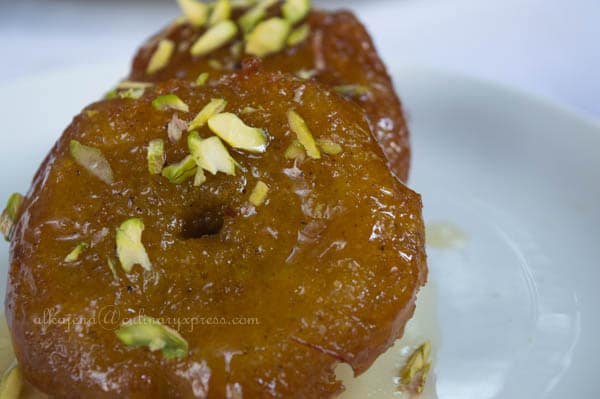
Ingredients for Apple Malpua
Red apple-1
½ cup Water Chestnut Flour( Singare ki atta)
1 tsp Cornflour
1tsp yogurt
1/2tsp fruitsalt
1tsp cinnamon powder
½ cup water
Yellow food colour(Optional)
Ghee for frying
Steps
- Ingredients for Sugar Syrup
- 3/4cup sugar
- 1/3cup water
- 1/2tsp lemon juice
- a pinch of saffron
- a pinch of green cardamom powder
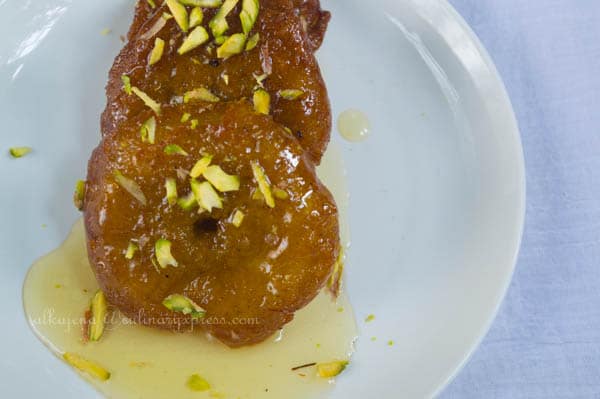
- Let’s learn how to make it:
- Take a mixing bowl and add water chestnut flour, corn flour, yogurt and add some water and mix to form a lump free batter. Keep aside.Add the fruit salt just before frying.
- Now mix sugar and water in a pan and stir over medium heat till sugar dissolves and the syrup has reduced to half of its quantity . add the cardamom powder and saffron in it. Take a drop of sugar syrup between two of your fingers and start pulling your fingers in opposite direction, if you find the syrup to be of a thread like consistency, then your sugar syrup is done.
- Add the lemon juice and turn off the heat. the lemon juice is added to stop the crystallization process.
- Now take one apple and peel the skin and scoop out the seeds and cut them into roundels.
- In a separate plate, add some water chestnut flour and cinnamon powder. Coat the apple pieces in it and keep it aside.
- Heat ghee in a pan and when it hot enough for frying, coat apple pieces in the batter and deep fry in hot oil till it turns brown on all sides.
- Drain the apple pieces in a paper towel and soak in the sugar syrup on both sides for 2 – 3 minutes. Transfer to a plate. Decorate with chopped pistachios and almonds and serve hot.
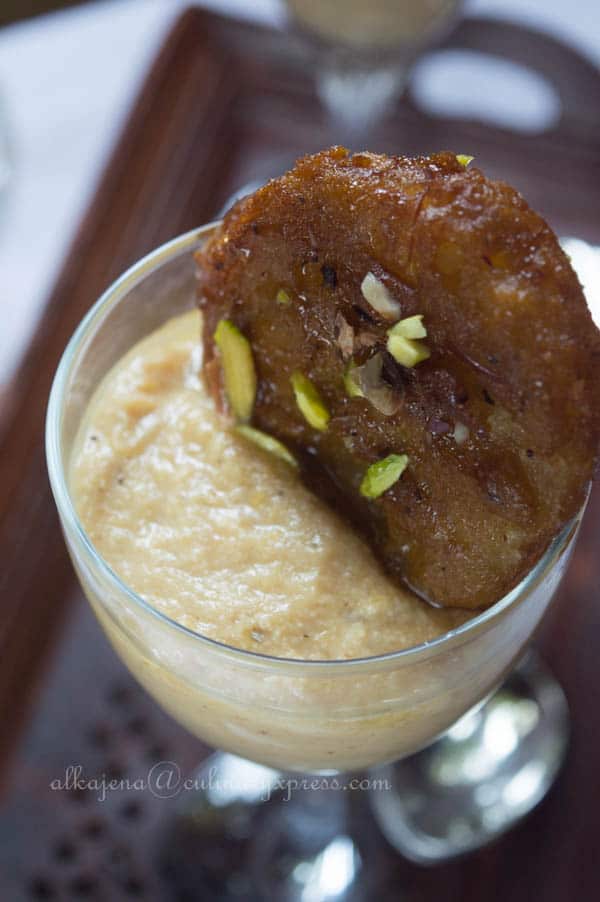
Ingredients
Steps
- Soak the apricot in warm milk for 2 to 3 hrs. Grind it to a fine paste with a little milk at a time and if needed u can add some sugar just to balance the sweetness of the paste.
- Heat the milk on a heavy bottomed pan and bring it to a boil. Now simmer the gas and let it boil. Add the green cardamom powder and boil till it reduces 1/3 of its original quantity. Make sure to stir it at regular intervals to avoid sticking at the bottom. Scrap the sides of the pan and mix it with the milk to make it thicker. Once the milk reduces to half of its quantity, add sugar and keep stirring till it reduces to a very thick consistency.
- let it cool completely. Once cool add the apricot puree and put it in the refrigerator to chill. Take out before serving.
- Fill the chilled Apricot Rabri on a glass and place a hot Apple Malpua on top. Relish the twist to this beautiful desert.


Comments are closed.